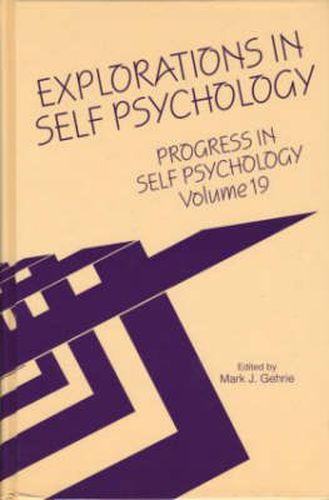Readings Newsletter
Become a Readings Member to make your shopping experience even easier.
Sign in or sign up for free!
You’re not far away from qualifying for FREE standard shipping within Australia
You’ve qualified for FREE standard shipping within Australia
The cart is loading…






The contributors to this volume wrestle with two interrelated questions at the nexus of contemporary discussions of technique: how authentic and relationally invested should the self psychologically informed analyst be, and what role should self-disclosure play in the treatment process? The responses to these questions embrace the full range of clinical possibilities. S. Dudley and T. Walker argue that emphatically based interpretation precludes self-disclosure whereas M. Miller argues in favour of authentic self-expression against the self psychologist’s frustrating attempt to decentre from frustration or anger. Consideration of the utility of a consistently empathetic stance continues with J. Weisel-Barth’s clinical presentation and the discussions that it elicits about management of her patient’s primary destructiveness. L. Lenoff’s critical re-reading of Kohut’s Examination of the Relationship Between Mode of Observation and Theory (1959) and J. Rieveschl and M. Cowan’s Selfhood and the Dance of Empathy deepen still further a contemporary perspective on the nature (and advisability) of a consistently empathetic stance in the face of interactive and enactive treatment challenges. Other timely self-psychological explorations examine the twinship selfobject experience and homosexuality (Martinez); self-psychological work with adolescents (Smaller); and Neville Symington’s theory of narcissism (M. Shoshani and B. Shoshani). J. Stern presents the case of Watt, Who was in doubt as to whether he was gay or straight and hoped that psychoanalysis would provide the answer . A. Ornstein returns to the topic of concentration camp survivors in order to dispel the image of the survivor as permanently scarred and incapable of healthy functioning. Contributions to applied analysis explore topics as diverse as an exchange of dreams between John Adams and Benjamin Ruch; Mann’s Death in Venice ; the films of Ingmar Bergman; psychotherapy of the elderly; and disabilities in the sensory-motor integration in children. This volume concludes with Constance Goldberg’s candid and enlightening reminiscence of Heinz Kohut, a very complex man with whom to be in a relationship .
$9.00 standard shipping within Australia
FREE standard shipping within Australia for orders over $100.00
Express & International shipping calculated at checkout
The contributors to this volume wrestle with two interrelated questions at the nexus of contemporary discussions of technique: how authentic and relationally invested should the self psychologically informed analyst be, and what role should self-disclosure play in the treatment process? The responses to these questions embrace the full range of clinical possibilities. S. Dudley and T. Walker argue that emphatically based interpretation precludes self-disclosure whereas M. Miller argues in favour of authentic self-expression against the self psychologist’s frustrating attempt to decentre from frustration or anger. Consideration of the utility of a consistently empathetic stance continues with J. Weisel-Barth’s clinical presentation and the discussions that it elicits about management of her patient’s primary destructiveness. L. Lenoff’s critical re-reading of Kohut’s Examination of the Relationship Between Mode of Observation and Theory (1959) and J. Rieveschl and M. Cowan’s Selfhood and the Dance of Empathy deepen still further a contemporary perspective on the nature (and advisability) of a consistently empathetic stance in the face of interactive and enactive treatment challenges. Other timely self-psychological explorations examine the twinship selfobject experience and homosexuality (Martinez); self-psychological work with adolescents (Smaller); and Neville Symington’s theory of narcissism (M. Shoshani and B. Shoshani). J. Stern presents the case of Watt, Who was in doubt as to whether he was gay or straight and hoped that psychoanalysis would provide the answer . A. Ornstein returns to the topic of concentration camp survivors in order to dispel the image of the survivor as permanently scarred and incapable of healthy functioning. Contributions to applied analysis explore topics as diverse as an exchange of dreams between John Adams and Benjamin Ruch; Mann’s Death in Venice ; the films of Ingmar Bergman; psychotherapy of the elderly; and disabilities in the sensory-motor integration in children. This volume concludes with Constance Goldberg’s candid and enlightening reminiscence of Heinz Kohut, a very complex man with whom to be in a relationship .